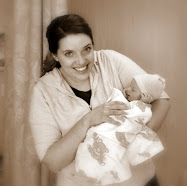Some hundreds of years ago, Colonial Americans thought it fit for a woman who had just given birth to keep to her bed for three or four or more weeks. For the length of the “lying in” period, as it was called, the new mother would rest, regain her strength, and bond with the baby as her womanly attendants kept up the household. Several of these ladies would be relatives, and others not; none were paid, and all expected to be similarly cared for following their own deliveries. Then, in the 19th century, the last free land was settled, and everyone retired to her own room. As Richard and Dorothy Wertz write in Lying-In: A History of Childbirth in America, “The era of social childbirth, with its volunteer woman-to-woman help, passed with the disappearance of the American frontier.” The “lie-in” wasn’t adapted or modified. And it certainly wasn’t replaced with anything.
This country is one of the only utterly lacking in a culture of postpartum care. Some version of the lie-in is still prevalent all over Asia, Africa, the Middle East, and particular parts of Europe; in these places, where women have found the postpartum regimens of their own mothers and grandmothers slightly outdated, they’ve revised them. The U.S. seems only to understand pregnancy as a distinct and fragile state. For the expectant, we issue reams of proscriptions—more than can reasonably be followed. We tell them what to eat and what not to eat. We ask that they visit the doctor regularly and that they not do any strenuous activity. We give them our seats on the bus. Finally, once they’ve actually undergone the physical trauma of it, their bodies thoroughly depleted, we beckon them most immediately to rejoin the rest of us. One New York mother summed up her recent postpartum experience this way: “You’re not hemorrhaging? OK, peace, see you later.”
The Chinese traditionally adhere to 30 days of restful confinement—another week for a C-section—during which time moms are meant to consume lactation-inducing soups and herbal tonics and abstain from sex and cold water. In Mexico, the ritualized interlude, or thecuarentena, goes for 40 days, or long enough for the womb to return to its place. Balinese women are not allowed to enter the kitchen until the baby’s cord stump has fallen. Dutch maternity nurses make postpartum visits every day for the eight days after childbirth, and in France, as elsewhere, new moms spend nearly a week in hospital. Always, the mothers are educated as they convalesce; they’re taught to breast-feed, to manage baby rashes and bath time and sore nipples. Rarely are they first to respond to the infant’s shrieking. In 2011 I visited a luxury postpartum center in Taipei, where women of means (and who would rather not call on their mothers-in-law, as is custom) spend a month in recovery. When I asked Tsai Ya-hui, who had given birth to her first child three weeks earlier, what she did all day in her high-end suite, she answered: “Internet and sleep. That’s about it.” She looked more refreshed than I did.
There are elements of these postpartum practices (the consumption of foods rich in iron) that are common-sensical, and there are others (tightly wrapping the belly with a postnatal girdle; consuming distilled rice wine in place of water; extremely limited exposure to the sun in the first month), the usefulness and safety of which are debated by the medical community. But the thing to focus on here is the idea of a culturally recognized and accepted postpartum rest period. With these rituals comes an acknowledgment, familial and federal, that the woman needs relief more at this time than at any other—especially if she has a career to return to—and that it takes weeks, sometimes months, to properly heal from childbirth. An acknowledgement that overexertion after labor could lead to depression, infection, increased uterine bleeding, or prolapse. An acknowledgment that the postpartum stretch shouldn’t feel, as it did for so many of the American women who took part in my informal survey, like one long sleepless night.
“A culturally accepted postpartum period sends a powerful message that’s not being sent in this country,” said Dr. Margaret Howard, the director of the Day Hospital for Postpartum Depression in Providence, Rhode Island. “American mothers internalize the prevailing attitude—‘I should be able to handle this myself; women have babies every day’—and if they’re not up and functioning, they feel like there’s something wrong with them.” A colleague of Howard’s, the daughter of a pediatrician, brought her prepregnancy jeans to the delivery room, expecting to slip into them once the baby was out.
I spent part of an afternoon with some new mothers in Park Slope, an affluent Brooklyn neighborhood that is frequently and teasingly associated with over-the-top urban parenting. As a group, they’d received probably the best postpartum care that this country has to offer, which they detailed over the squeals and sighs of their nursing infants. Sophia Sotto had hired a postpartum doula, but didn’t feel comfortable “asking her to do the dishes in the sink.” She remembered: “I still couldn’t manage when to shower, when to eat.” Sarah Hake had an episiotomy and still, like every woman in America, was asked to come in for a 15-minute checkup six weeks after leaving the delivery room. “Six weeks is too late,” she said. The rest murmured their agreement. All had cooked; all had cleaned. Asked Emily Lillywhite, “If you don’t get up and do it, who will?” One woman had taken an especially long walk two days after delivering, because she wanted to “feel normal again.” Most had been afraid to survey the wreck between their legs, and those who did look hadn’t been able to tell if they were healing well or not. “Google became my very good friend,” said Ruth Margolis. “Yes,” Sotto broke in. “Your postpartum support is the Internet.”
“It took me a good eight to nine weeks to be normal—I mean, physically able to not wear disposable underwear. But you’re supposed to be Facebook-ready two days after labor.”
I heard stories of women vacuuming upon arriving home after a day and a half in the hospital; of new moms waiting until the six-week checkup to make their postnatal complications known; of visitors turning up and instantly asking for coffee; of lactation consultants who were meant to, but did not, take insurance; of a postpartum doula who, when she was summoned by a mother one month postlabor, said, “You’re too far along to need me.” A popular site that advises women on how to find and work with a baby nurse counsels: “Ask your baby nurse what she likes to eat and stock up at the supermarket.” It is true that hiring a postpartum helper is far less expensive in, say, Hong Kong than in the U.S. But the problem is not one of money. The problem is that no one recognizes the new mother as a recuperating person, and she does not see herself as one. For the mourning or the injured, we will activate a meal tree. For the woman who is torturously fatigued, who has lost one 10th of her body’s blood supply, who can scarcely pee for the stiches running up her perineum, we will not.
A number of things have changed since the American frontier closed: women work outside the home, and the U.S. is the only industrialized nation not to mandate paid maternal leave; families are geographically scattered; childbirth has become medicalized, and medical treatment, costly. Still, immigrants to the U.S. and their children have found ways to observe a period of postpartum repose. There is, in Flushing, Queens, more than one Chinese confinement center, and the institutions run a fairly brisk business. I met with an Argentine woman, Andreina Botto, who kept some version of the cuarentena for two straight months. A South American nanny looked after her other children and prepared endless batches of fatty soups for Botto to sup. Botto was visited weekly by a Chinese doctor ($150 per rather lengthy visit), and by his instruction stayed in her pajamas most days, made sure to keep warm, and consumed fish oil. She sure didn’t diet; she ate in order to lactate and froze the excess milk.
If Botto hadn’t been able to afford hired postnatal help, she would have called on a family member. If her relatives had been outside the city and unable to make the trip in, she would have called on a friend. Full-time jobs are no impediment. In her book The Immigrant Advantage, Claudia Kolker visits a new mom, a Mexican woman living in Ohio, whose sister-in-law would come straight from the factory to administer care. For weeks, as the woman relaxed, her sister-in-law barely slept. This kind of arrangement is far from ideal, but, for those who subscribe to a system of postpartum support, the alternative isn’t an option. “In an airplane crash,” Botto said, “you need to put the mask on yourself first, not your kids. Only then can you be a good mother, a good wife. First you need to take care of yourself and recover. It’s key that in this 40 days you heal—it’s not like you can do it later.”
Put the mask on yourself first? In the States, a woman is looked after, by herself and by others, only so long as her body is a receptacle for the baby. Attention then transfers to the needs of the infant. To ask for respite is to betray not only weakness and helplessness, but selfishness. You should be prepared for the emotional and physical demands of your new motherly role and you should like them, too. “People are always asking, ‘Do you love it? Is it everything you dreamed?’” Brigita Jones, a new mom, told me. “Actually it sucks right now. But other women would be horrified if you said that; even the ones who’ve been through it. I was shredded after giving birth. The hospital flung me out. I had a colicky baby with feeding issues, and I had to take care of myself, which you can’t do when you’re not sleeping. It took me a good eight to nine weeks to be normal—I mean, physically able to not wear disposable underwear. But you’re supposed to be Facebook-ready two days after labor.”
America might begin by conceding that the postnatal period ought to be a formal, protected, well-monitored term and that any woman who does not adequately and restfully observe it is putting herself and her infant at risk. Increased paid parental leave and insurance policies that include longer hospital stays and regular postnatal visits would be helpful. So would a national discourse that does not stop at postpartum depression, which is the consequence and not the cause. Perhaps if we started talking about the time and energy it actually takes to recuperate from childbirth, women wouldn’t feel the need to return as quickly as possible to “normal.” A number of things have changed since the frontier closed, but the female body is not one of them.



No comments:
Post a Comment